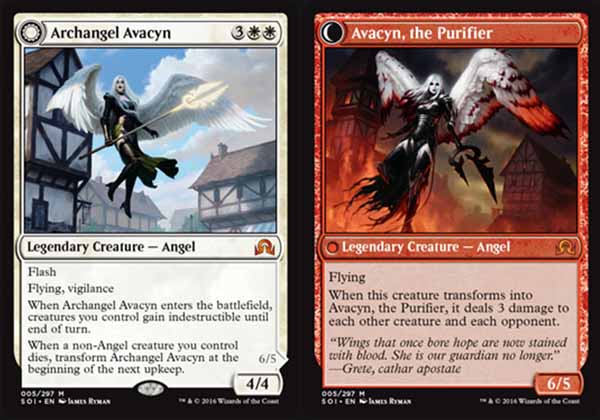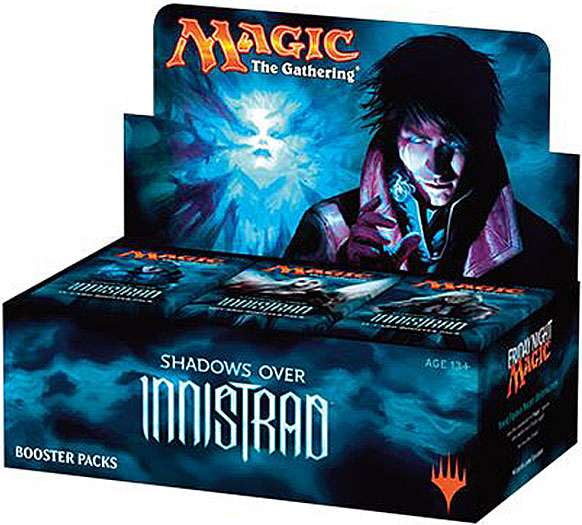
With these hurdles aside, it will be interesting to see how future Magic cards combine with other out-of-franchise IPs to make this collectable card game evolve even further. It took almost 30 years, but Magic and D&D have finally crossed the streams, unifying into something truly memorable. Prototype cards used to test dice rolling mechanics in Adventures in the Forgotten Realms. Marrying the fun tension of dice rolling and not losing the game on the spot, was a tough yet achievable feat when it came to designing AFR. Dice rolling offers a high amount of variance which, during early playtesting, often determines the outcome of the game. “When we were playtesting the die cards, die rolling was very polarizing,” said Rosewater. However, they settled on using a D20 as it’s so iconic with D&D that it would be a missed opportunity to use anything else. The team toyed with the idea of removing cards from the top of your deck, or using dice with fewer sides to offset variance. “We start with again trying to capture things people love out of D&D, there is this amazing moment of tension where you’re going and trying to do something very important and you roll the D20 and see if it’s going to work out,” Robins said. Photo: Wizards of the Coast via YouTubeĪdding to the individuality of the set, dice rolling is a new mechanic for black-bordered Magic cards and refers back to how you would play in a session of D&D.

Sample cards included in the first dungeon decks. The design team concluded creating three dungeons to offer the ability of choice, an experience you often see in D&D. “What if instead of the room having their own challenges, what if the Magic cards are the ones taking you through the dungeon?” asked Robins. Through revisions, the team settled into something you now see when you crack open AFR Draft and Set Boosters. Combining the flavor that D&D demands with a mechanic that wants to support both casual and competitive Magic players is a tough task. It was critical for the team to get this mechanic correct, since traversing through dungeons is an evergreen feature of D&D. It didn’t work out as playtesting made the variance tricky to manage, not to mention how casual and competitive Magic players would struggle to tackle the dungeons. “Every so often you’d be about to move your marker and explore a new room and try to figure out where you were going in this dungeon as it spawned,” Robins said. Initially, the dungeon mechanic was intended to comprise a second, separate deck or cards. “Once that conversation got going, one of the things that came up really quickly was, well, why not Dungeons & Dragons?” “What if other IPs appeared on Magic cards?” said Rosewater.

Tolkien’s The Lord of the Rings books will be the source for the first two sets in that initiative, but AFR is effectively a prequel. It’s a broader, collaborative effort to bring in different IPs to become Magic cards. Later, it was a suggestion by Aaron Forsythe, vice president of Magic design, that gave birth to Universes Beyond. The effort then expanded into full-priced physical and digital sourcebooks with Guildmaster’s Guide to Ravnica, Mythic Odysseys of Theros, and Strixhaven: Curriculum of Chaos (which is available Nov. Wizards’ James Wyatt led an effort to turn out free-to-download sourcebooks based on popular Magic sets - Plane Shift: Innistrad, Plane Shift: Amonkhet, Plane Shift: Kaladesh, and Plane Shift: Ixalan. “Originally, the idea was let Magic be Magic and let Dungeons & Dragons be Dungeons & Dragons, and really for many years we kept them apart.”ĭecades later the concept changed. “Don’t cross the streams,” explained Mark Rosewater. In it, they talked about the key controversies that came along with its release, namely dungeons and rolling dice.įor a long time, the distance between Wizards’ two main intellectual properties was intentional, despite them both offering an appealing high fantasy experience. At San Diego Comic-Con on Saturday, head designer Mark Rosewater and lead designer Jules Robins shared a pre-recorded conversation (captured before the release of the Strixhaven set in April), a kind of post mortem for a set that now seems destined for greatness. Called Adventures in the Forgotten Realms ( AFR), it’s a set based on publisher Wizards of the Coast’s other big property - Dungeons & Dragons. Before players came to learn that it was actually quite good, Magic: The Gathering’s latest set of cards was very polarizing.


 0 kommentar(er)
0 kommentar(er)
